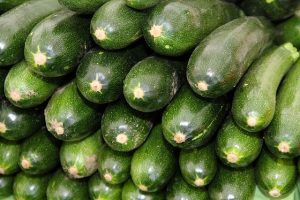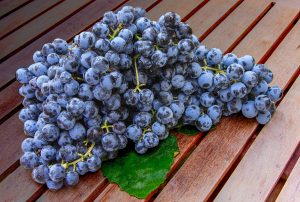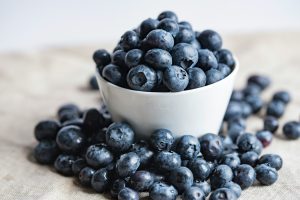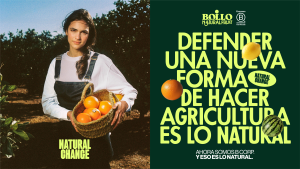Avocados have taken on a prominent place in the shopping basket in many countries. What importance do they have at present worldwide?
Every year, around 2.5 million tonnes of avocados are marketed (exported) around the world, mainly of the Hass variety. The production is high, but there is a great deal of local consumption in the countries. It is 8th in the international fresh fruit trade ranking, and in value it holds the 4th place (2022 figures).
Is there a majority profile for avocado consumers? Is inflation affecting this consumption?
On the great world market, 90% of the trade is between the USA and the EU. 75% of the avocados marketed are produced in Latin America, from Mexico to Chile. There is some production in California, but the bulk of the volume comes from this region. In Europe, consumption has been growing fast, particularly over the past decade. One of the characteristics of the avocado is that it has no substitute. It is eaten by people who are interested in their health, who want to have an alternative source of healthy fats. It is highly versatile, it can be eaten sweet or savoury, cold or hot, as a snack… and at all ages. In Asia, it is being promoted as the first solid food given to babies, but it is also very beneficial for the elderly population as a differentiated source of fats.
How is avocado consumption evolving in Asian countries?
It is definitely growing. We have all heard this comparison that if each inhabitant of China were to eat an avocado a day, the entire world production would not be enough. But I think that this is going change in a few years’ time. In Asia, there are different levels of consumption. Japan is a mature market, where avocados have been eaten for some decades now and there are sources carrying out promotion. They are on all the supermarket shelves and the growth on the market is reasonably organic, around 3-5% per year. The players are already well-established (specialists and distribution). To a certain extent, avocados are already part of the Japanese diet. The country’s consumption is quite static.
Korea has woken up to avocados recently and it is moving over from being a market on which green avocados were sold to be ripened at home, to having ripe, ready-to-eat avocados on the supermarket shelves. Providing consumers with a fruit that can be eaten either the same day or the following one increases consumption, and Korea is already making this change.
China shows the greatest promise in consumption. After COVID, (its restrictions were lifted last year), the country has shown great interest in the fruit and the issues related to health and nutrition. Consumption has shot up.
Regarding sources, Asia has exponentially increased its imports from Peru. This year, compared to the previous one, it is seeing a 40% growth.
But interest in the fruit in Asia is also being seen because they now have some local production. For example, fields have been planted in China. There are countries in Africa and Oceania that already have access to these markets and others are on the list waiting to gain access. This is a sign of both local interest and from other countries which want to increase trade towards China.
Is China easing the formalities to have more avocados available from different sources?
Yes. We all know that the consumption of any appetising fruit or product increases when there is availability all year long. And the fact that there is local production in China is going to be important for promoting avocados and increasing imports from other sources.
What is the WAO’s strategy in order to continue promoting consumption?
We are eight member countries, mainly Peru and South Africa. There are also members in Spain, and in Africa there are countries that are contributing to the WAO. In total, we include around 800 producers, importers and marketers with a common goal. Our aim is to put the benefits of our fruit on consumers’ tables and achieve greater consumption, to ensure that it is part of the diet of more and more people. To do this, we are backed by scientific information and studies that have been carried out in different parts of the world.
We have been very active in Europe up until last year, and this year we have taken our first step promoting avocados in India. We have dedicated a small part of our budget to this country and it has all gone quite well. India is a market on which, as the diet is mainly vegetarian, and where there are already local plantations that can help and increase this consumption, the fruit has been very well received. We are very happy with the results to date.
Additionally, we are highly satisfied with what has been achieved in recent years in the WAO. It has a more solid structure; we now have a marketing team and a Chief Executive who are all carrying out great work in bringing new sources and chains to the WAO’s promotion programmes. We are working with companies that give us the support that is needed on each market.
Are the local plantations in China and India mainly opting for Hass or are they also planting other varieties?
Yes, they are mainly opting for Hass plantations. There are countries, such as Indonesia for example, which is a great consumer of green-skinned varieties. In Thailand there is also an important consumption of a local, green-skinned variety, and Hass is arriving as a complement.
What changes are occurring to the production in Latin America?
The last great player to arrive on the world stage in the avocado trade is Colombia. Its industry now has been developing for 14 years more or less, but over the past 5-6 years its impact has been noted. Colombia is now occupying an interesting window: winter in the northern hemisphere and it complements the productions from Peru and South Africa very well.
In some regions, a certain slow down is being seen in the increase in crop surface areas. When do you think avocados will peak?
There is a study by CIRAD that shows that the plants being sown at present in the world are going to generate an excess of supply over demand. Planting has been slowing down recently and we must try to make consumption catch up with the offer.
The crop takes 3-4 years to start producing and 5-6 to reach a mature production. The changes in the offer take time and must be accommodated along the way. Many new sources do not have access to all the markets. This requires constant work that is carried out at each source in order to have protocols on the different markets.
I think that avocados are going to find their balance point over the next few years and, as this is reached, the crops will increase once again in the well-established regions. However, I am sure that there are sources that are attractive depending on the window in which they appear. This is quite a dynamic business, with many sources and in which many factors converge at different times of the year.
In sources such as Spain, climate change and the drought are reducing the harvests. How are the members of the WAO facing up to these problems?
They are looking for new farming areas. In many cases, this involves trial and error. In Spain, for example, a few years ago the idea of sowing avocados in Valencia was unthinkable and with climate change, there are now many plantations in these new regions.
Avocado growing is attractive. It requires little workforce, apart from the harvest, which is manual. Regarding the water impact, the droughts have affected avocados as they have other products; no crop is immune to this factor. Avocados, as opposed to what some people believe, have quite a low water requirement, around 600 l/kg, depending on the sources.
This is another task that we have proposed, specifying what the crop requires regarding water use, impact on the carbon footprint… We have carried out several sustainability studies and we have up-to-date information, backed by prestigious experts in the different areas.























